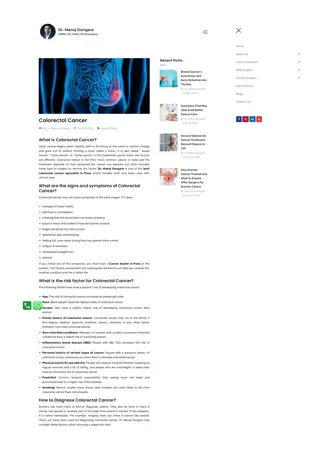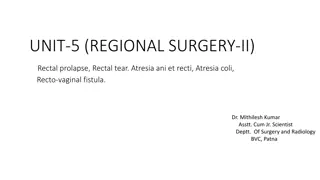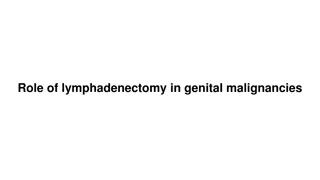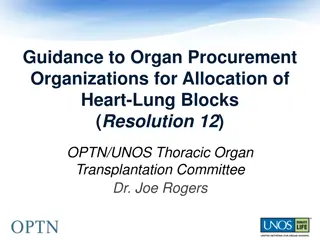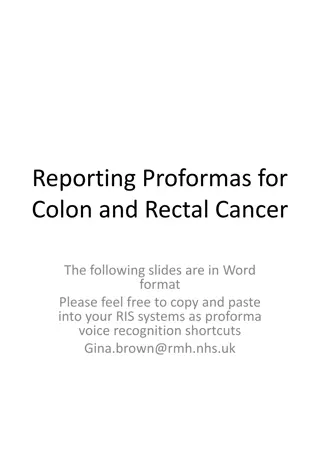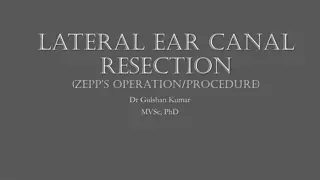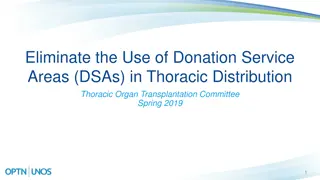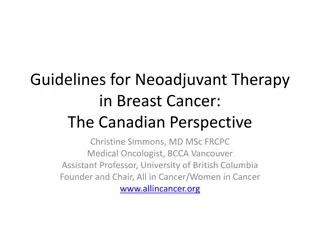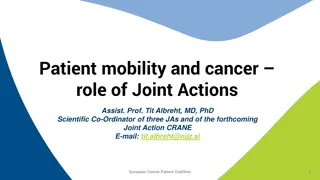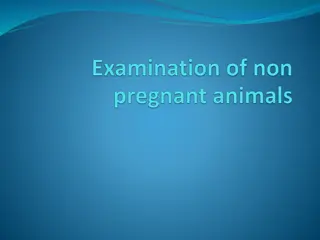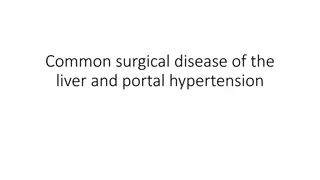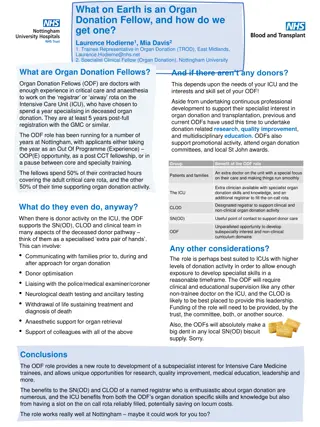Comparison of Surgical Resection vs. Organ Preservation after Neoadjuvant Chemoradiotherapy for Rectal Cancer
In the management of rectal cancer, the debate between surgical resection and organ preservation after neoadjuvant chemoradiotherapy is ongoing. While surgical resection is highly effective, the watch-and-wait strategy offers benefits such as avoiding permanent stomas and improving quality of life. However, it comes with risks of local regrowth and disease recurrence. Recent data shows promising outcomes with the watch-and-wait approach, but studies have varying results, highlighting the need for further research to determine the optimal approach for patients with complete clinical response.
- Rectal Cancer
- Neoadjuvant Chemoradiotherapy
- Surgical Resection
- Organ Preservation
- Watch-and-Wait Strategy
Download Presentation

Please find below an Image/Link to download the presentation.
The content on the website is provided AS IS for your information and personal use only. It may not be sold, licensed, or shared on other websites without obtaining consent from the author. Download presentation by click this link. If you encounter any issues during the download, it is possible that the publisher has removed the file from their server.
E N D
Presentation Transcript
Complete clinical response following neoadjuvant chemoradiotherapy for rectal cancer: surgical resection versus organ preservation Dr Jessica Jenkins Consultant Oncologist
Background The largest proportion of colorectal cancer cases occur in the rectum. Each year in UK; over 8500 patients are diagnosed with Rectal Cancer.
Standard of Care Total Mesorectal Excision surgery for rectal cancer is highly effective Surgery carries risk of morbidity, impact on quality of life and perioperative mortality of 1-2% May require formation of permanent stoma Neoadjuvant chemoradiotherapy for patients with high-risk non-metastatic rectal cancer improves local control
Outcomes of Neoadjuvant Chemoradiotherapy for Rectal Cancer Over last decade increasing reports of excellent responses to neoadjuvant chemoradiotherapy Complete disappearance of tumour and involve local nodes Pathological complete response (pCR) rate up to 25% Associated with favourable long term outcomes
Pioneers of Watch and Wait 265 patients received neoadjuvant chemoradiotherapy for a distal rectal cancer 71 patients (26%) achieved a cCR and entered a strict surveillance programme 2/71 patients had local tumour regrowth within the rectal lumen and 3/71 patients developed systemic relapse. 5-year OS 100% and 5-year DFS 92%
Watch and Wait Strategy Advantages Disadvantages Risk of local regrowth Potential for unsalvageable disease recurrence Risk of pelvic relapse Impact on long term oncological outcome Non-operative approach Organ preservation Delay/avoid permanent stoma formation Improved Quality of Life
Watch and Wait Data Multiple cohort series available in which surgery omitted after complete clinical response to neoadjuvant chemoradiotherapy Data available is retrospective, small cohort series Heterogenous study populations Variable complete clinical response rates Range of local regrowth rate 5%-60%
OnCoRe Project Oncological Outcomes after Clinical Complete Response in Patients with Rectal Cancer 129 patient identified as complete clinical response 44/129 (34%) patients on Watch and Wait had local regrowth 41/44 had luminal growth only and received salvage surgery 109 patients included in the matched analysis with no difference in 3-year non-regrowth DFS or 3-Year OS between W&W and surgical group. Better 3-year colostomy free survival in the W&W group.
International Watch and Wait Database Lancet June 2018 1009 patients treated with neoadjuvant treatment managed by W&W 880 were identified as having a cCR. Median follow up time was 3.3 years Local regrowth rate at 2 years was 25%, 87.8% patients who recurred during follow up were successfully salvaged by surgery 3-year metastatic rate 8.1% 5-year overall survival 84.7%
Patient Selection for Pre-Operative Therapy Patients unfit for radical surgery Patients who wish to avoid APE Patients with High-Risk Low Rectal Tumours Patient with locally advanced disease
Patients with Early Stage Low Tumours Suitable for local excision or Transanal Endoscopic Micro Surgery in absence of adverse features Should proceed without neoadjuvant therapy Presence of high risk feature associated with local recurrence rate 20% and these patients should be offered radical surgery Current data does not address whether neoadjuvant chemoradiotherapy aimed at organ preservation is justified or safe in patients with small distal rectal tumours.
Clinical Trials Currently insufficient robust data to support Watch and Wait as standard of care approach for patients with complete clinical response after neoadjuvant therapy Available data may aid shared decision making between clinicians and patients Patients should be considered for appropriate Clinical Trials STAR TREC Phase II three arm randomised feasibility trial, comparing the Standard TME surgery (control) vs Organ saving with either long course concurrent chemoradiation or short course radiotherapy TRIGGER Magnetic Resonance mrTRG as Novel Biomarker to stratify management of good and poor responders to chemoradiotherapy.
Conclusion Focus is shifting towards a more individualised approach to the management of rectal cancer There is growing interest in organ preserving strategies in selected patients Aim is to improve long term QOL and functional outcome without impacting on Oncological Safety Essential to pursue further research to develop further evidence- based treatment strategies in this developing area of interest.




